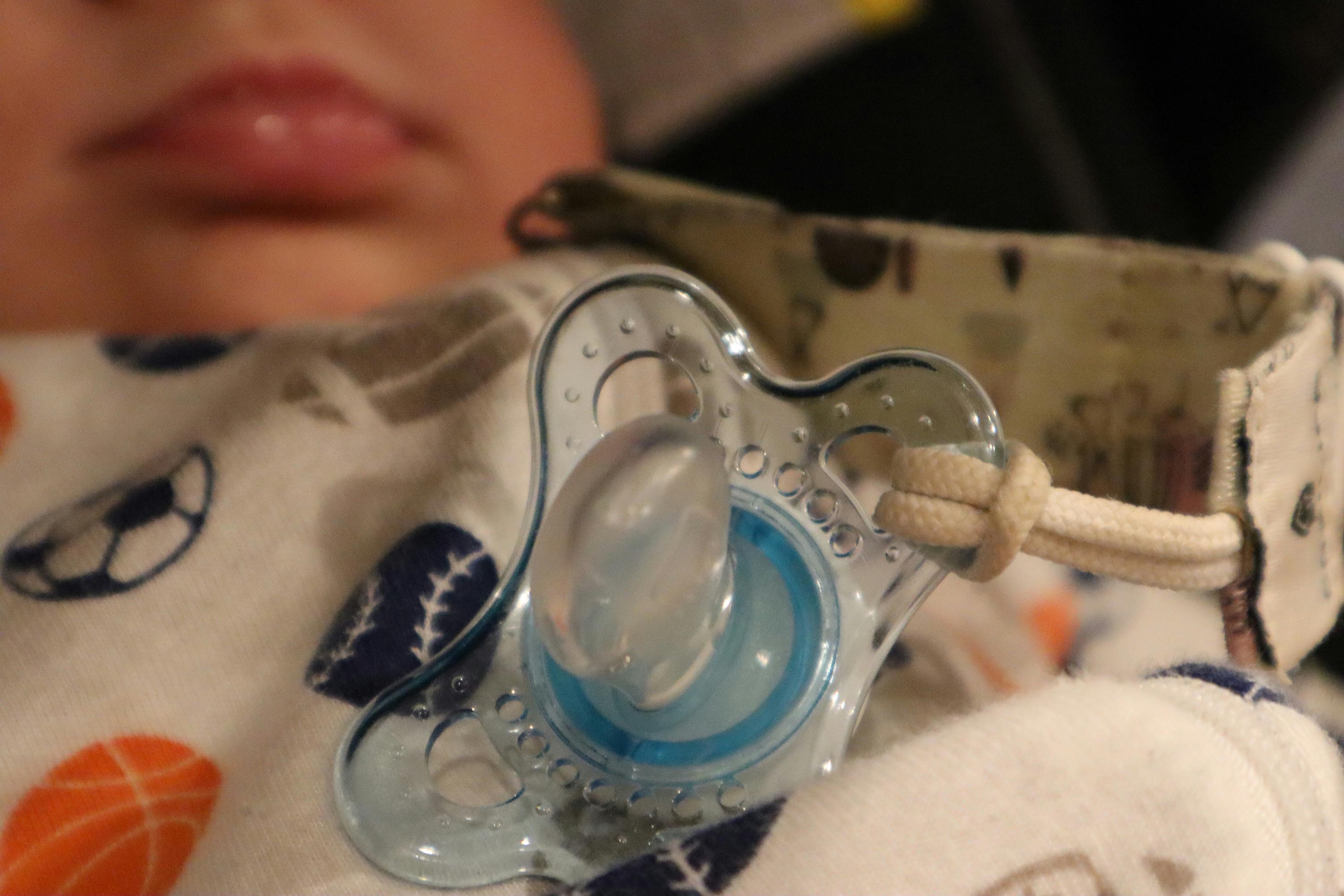18.02.2025
Proper development of babies jaw and bite

The development of a proper jaw and bite in babies is crucial for their oral health, speech, and chewing function. Factors such as genetics, feeding style, and the use of pacifiers and bottles can have a major impact on jaw formation. Recognizing and adapting the correct habits in time can help prevent orthodontic problems later in life.
The influence of breastfeeding on the development of the jaw
Breastfeeding plays an important role in the development of facial muscles and proper bite. During breastfeeding, the baby uses complex muscle movements, which encourage the proper development of the upper and lower jaw. Studies show that breastfeeding reduces the risk of malocclusion and contributes to proper growth and development of the palate. In addition, breastfeeding helps form stronger lip and tongue muscles, which can later contribute to proper speech development.
The role of pacifiers and bottles in jaw development
In the first months of life, the way babies drink milk can also affect their oral development. Babies have a natural sucking reflex that allows them to be fed and soothed. Breastfeeding is a natural stimulus for the proper development of the jaw and facial muscles, as it requires more muscle engagement than bottle feeding. When a baby sucks from a bottle, he often uses a different sucking technique, which can lead to: less development of facial and tongue muscles and an increased risk of malocclusion (improper bite). In addition, long-term use of bottles can lead to "bottle cavities", especially if the bottle is used at night or contains sweetened beverages.
Although pacifiers and bottles can be very useful, their long-term use can lead to jaw and bite problems, and possible problems include:
Open bite – the front (upper and lower) teeth do not come into contact when they are in the closed position, which can make chewing and speaking difficult.
Crossbite - the lower and upper jaw are not properly aligned, which can cause functional problems, for example when chewing.
High palate - irregular palate structure can affect breathing and speech.
Because of these and many other problems, the American Academy of Pediatrics (AAP) recommends limiting the use of pacifiers and bottles after six months to reduce the risk of orthodontic complications.
Prevention
In order to ensure proper jaw and bite development in babies, parents are advised to take the following steps if possible:
Encouraging breastfeeding - breastfeeding until at least the sixth month can contribute to the proper development of the baby's oral structures.
Use of anatomically shaped pacifiers and bottles - pay attention when choosing pacifiers and bottles, because these options have less impact on the natural development of the jaw.
Limit the use of pacifiers - ideally, stop using pacifiers by 12 months to prevent orthodontic problems.
Transition to solid food at an appropriate period - transition to solid food at a certain period and not prolong breastfeeding or using bottles, because chewing food with different textures encourages the development of the jaw and facial muscles.
Visit the dentist on time - the first examination by a child's dentist is recommended around the first year of life in order to monitor proper oral development.
The conclusion is that pacifiers and bottles, in addition to their advantages, can also have a negative impact on the development of the jaw and bite if they are used for too long or incorrectly. Correct oral habits at an early age can significantly reduce the risk of orthodontic problems in the future, which is why parental awareness and adherence to expert recommendations are key to healthy jaw and bite development in babies.
*This text is intended for informational purposes only. If you experience any symptoms, it is recommended that you seek advice from your doctor or a qualified healthcare professional.*
*Image taken from the site:https://unsplash.com/photos/clear-pacifier-on-white-textile-pGIVYCg7Wns
References
Neiva, F. C., Cattoni, D. M., Ramos, J. L., & Issler, H. (2003). Consequences of bottle-feeding to the oral facial development of initially breastfed children. Journal of Pediatrics (Rio J.), 79(1), 7–12. https://doi.org/10.2223/JPED.961
Senthilkumar, G. P., Pandiar, D., Kumar, H., Anand, L., & Shameena, P. M. (2021). COVID-19: Overview, evolving therapeutic strategies, and nanotechnology-based therapeutics. Medicine in Drug Discovery, 10, 100086. https://doi.org/10.1016/j.medidd.2021.100086
Kids Pediatric Dentistry. (n.d.). Your child’s teeth: Bottles, pacifiers, and thumb sucking. Preuzeto 12, februara 2025, sa https://kidspv.com/blog/your-childs-teeth-bottles-pacifiers-and-thumb-sucking/
Your trusted partner in finding medical information. We offer access to reliable resources and make it simple for you to get in touch with qualified medical service providers. Our goal is to assist you in achieving optimal health through dependable information and ongoing support, whether it's advice, a physical examination, or expert consultation.